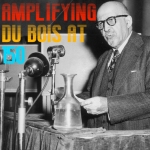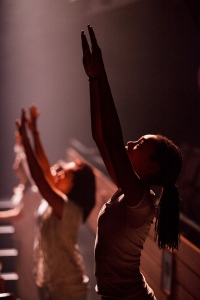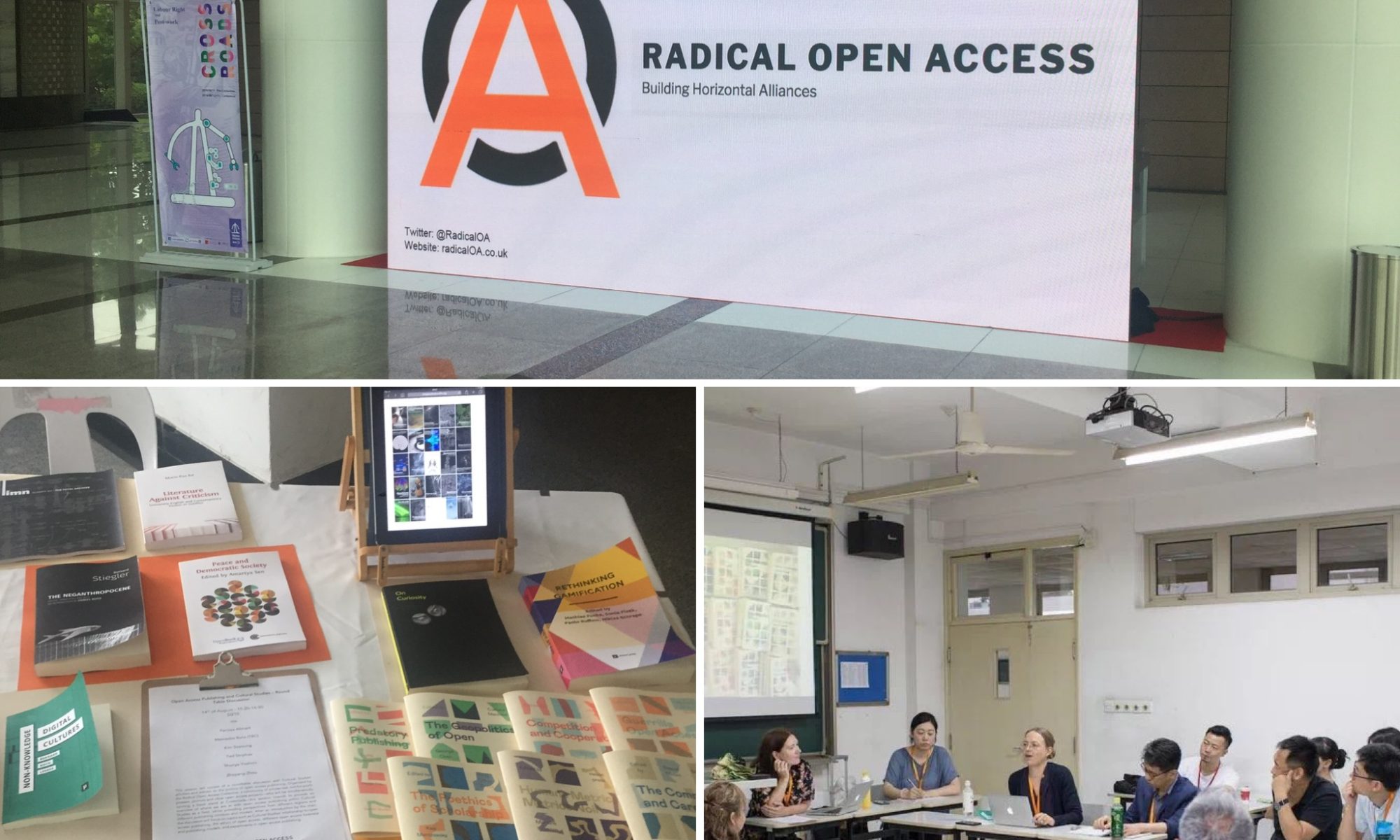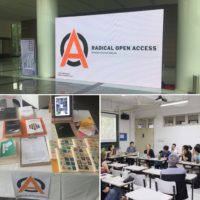THE CRITICAL MAKERS READER:
COLLABORATIVE LEARNING WITH TECHNOLOGY
Published by the Institute of Network Cultures
Edited by Loes Bogers and Letizia Chiappini
THE CRITICAL MAKERS READER
Makerspaces and fablabs are popping up in community centers, schools, universities and libraries, offering access to industry-standard production methods. In parallel to this interest in digital fabrication and maker culture, there seems to be a growing appreciation of critically engaged reflexive making processes. Such critical engagements with technology are being propagated across the fields of design, art, humanities and engineering as being imperative for coming to terms with the pressing complex ecological, political, cultural, economic and social issues of our times. Substantial theories of collaborative critical making as emancipatory practice across disciplines are needed to further address the educational challenges at play in learning how to become socially engaged creative professionals and citizens of the postdigital age. The challenges we face for education in this increasingly networked era are shared across disciplines, calling for sharing knowledge of how to critically engage with contemporary issues.
For this publication, we call for contributors who wish to explore questions raised at the intersections of maker culture, critical applied research methodologies, interdisciplinary collaborative practice, (higher and informal) education, emancipatory pedagogy and the commons. The reader will be a volume of critical contributions and discussions by theorists, creative practitioners, programmers, designers, artists, activists, engineers and educators to address the transformative potential of such practices and spaces. The reader will be edited by Loes Bogers and Letizia Chiappini, to be published by the Institute of Network Cultures in September/October of 2019.
WE INVITE
We are looking for authors coming from a variety of cultural backgrounds and disciplines such as: visual culture, design and media, science and technology studies, sociologists, economists, intersectional feminist and software scholars, commons researchers, educators, critical makers, artists, hackers, activists, designers, lab managers and technicians, cultural producers, engineers, open-source advocates and others to submit a contribution.
POSSIBLE TOPICS MAY INCLUDE
aesthetics and theory: theories of making and matter // defining criticality in making // the post-digital factory // aesthetics of critical technical practice // making and epistemology // theories of heterophily and interdisciplinarity // genealogies of critical making practices // forms, functions and modes of critique // practices vs. disciplines //
intersectional and non-western perspectives on making: decolonizing maker processes and spaces // theories of collaborative practice and affinity politics // situated making: situated understanding // institutional unlearning // inclusion and access //
makers/space urban economies: creative industries, contemporary capitalism // models for scaling: from prototype to protocol // policy agendas and funding streams // topologies of spaces for making // value of process and product // creative industries and the commons // situatedness in relation to local economic systems // manufacturing in the city //
education and pedagogy: tools, techniques, methods or concepts // engaging critical concepts at undergraduate and vocational level // authority, embodiment and presence // methods, concepts and action routines // educational formats // strategies for unlearning // materials research 2.0 // collaborative practice for the commons // questions of evaluation and grading // institutional support and infrastructural issues //
FORMATS
We welcome both academic and non-academic articles as well as: interviews, dialogues, essays and articles, local and translocal case studies, images (b/w), email exchanges, manifestos, or other, with a maximum of 5,000 words, but preferably shorter. For scope and style, take a look at the previous INC Readers.
WANT TO JOIN?
Send your proposal (500 words max.) to Loes Bogers & Letizia Chiappini, productioninc [at] networkcultures [dot] org before December 14th, 2018.
DEADLINES
First draft of contributions: March 15th, 2019, final submissions: before May 15th, 2019.
BACKGROUND OF THIS PUBLICATION
With this call, the Makers Lab and the Institute of Network Cultures aim to bring together a wide variety of contributions on interdisciplinary, collaborative making practices with a socially engaged and critical perspective. The goal of the publication is to illuminate the current state of theory, best practices and case studies of critically engaged making in higher education and informal learning contexts, to make them accessible for students as well as educators, and to foster critical debate in the maker community at large.
The Makers Lab is a DIY fabrication and prototyping lab with an educational and research program at the Amsterdam University of Applied Sciences’ Faculty of Digital Media and Creative Industries. An interdisciplinary research elective for undergraduate students in fashion design and branding, media design, computer engineering and communication was launched in 2018 to explore making as critical pedagogy, research methodology, and collaborative practice, in an educational context where young people train for professions in the creative industries.
The Institute of Network Cultures (INC) analyzes and shapes the terrain of network cultures through events, publications, and online dialogue. Their projects evolve around digital publishing, alternative revenue models, online video and design, digital counter culture and much more. A key focus is the establishment of sustainable interdisciplinary research networks: emerging critical topics are identified and shaped in a practical sense.
MORE INFORMATION
Makers Lab interdisciplinary undergraduate elective (30 ECTS): http://minormakerslab.nl
BACKGROUND
Making can be many things, and as such has been of interest to craftsmen, artists, designers, philosophers, laymen, children, engineers and theorists alike. It has been understood as a way to express and affirm one’s presence, to externalise and test ideas, to communicate, to approach the unimaginable, to unearth latent beliefs, needs or ideologies, to start conversations, as instrument for wellbeing and learning, to examine power structures, to research materials, to practice modes of collaboration, to understand processes and modes of production, to explore realms of potentiality and possibility, to enable democratic and inclusive research practice, and more .
The current moment however also begs of us to no longer ignore that society’s problems are wicked and unsolvable, resources are undeniably scarce, knowledge can only ever be situated and partial, and social inequality is yet to find resolve. Where does this leave us as humans with a seemingly innate desire to make? How and when do we make responsibly and to which end? What are the heuristics for the value of our makerly labor? What is the role of education? This publication aims to explore such questions, starting from the idea that no object stands on its own: every object made is fundamentally entangled in social, ecological, cultural, economical, infrastructural as well as political fabric.
Makers Lab aims to explore, map and critically probe models, theories, concrete tactics, strategies, tools and concepts by bringing together a network of students, researchers, artists, developers, engineers, critics, theorists, educationists, and educators to unpack ideologies around the maker fad in contemporary creative industries and imagine how radical alternatives might take shape in formal and informal educational contexts. The focus of this endeavour is to contribute to debates on contemporary making by looking into three fields of inquiry, viewing material engagements with the postdigital as: critical pedagogy and didactic toolkit, as critical research methodology, and as emancipatory, interdisciplinary collaborative practice.






 ).
).



 Inspired by the recent Black Perspectives
Inspired by the recent Black Perspectives 



 REWIND! . . .If you liked this post, you may also dig:
REWIND! . . .If you liked this post, you may also dig:


